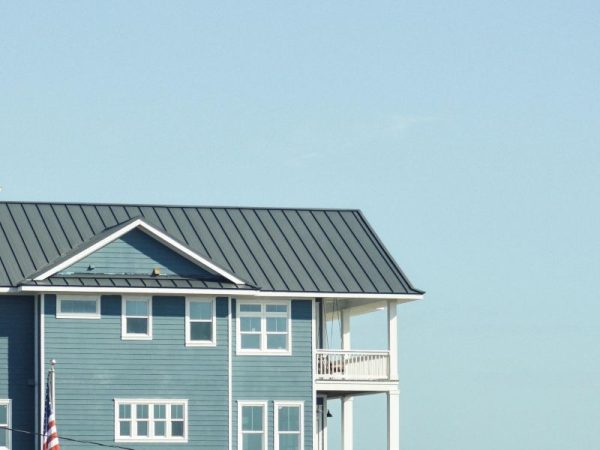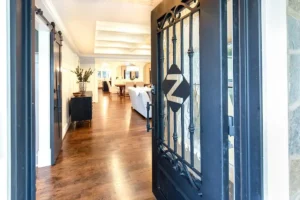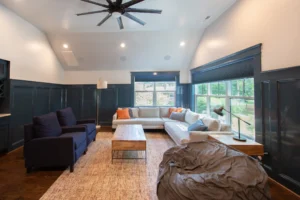Roofs are not just functional elements of a building; they also serve as a canvas for architectural creativity and design. The aesthetics of roof design play a pivotal role in enhancing a building’s visual appeal, setting the tone for its character, and making a significant statement about the structure. This article explores the art of roof design, the impact of aesthetics in roof installation, and the factors that contribute to stunning and harmonious roofing solutions.
The Role of Aesthetics in Roofing
Aesthetics in roof design are more than just ornamental features; they are integral to a building’s overall visual appeal and style. The roof is one of the most prominent exterior elements, and its design has a considerable influence on a structure’s:
1. Architectural Character
The shape, slope, and design of a roof define the architectural character of a building. A steeply pitched roof with intricate gables evokes a different style, such as Victorian or Gothic, compared to a flat, modernist roof with clean lines.
2. Curb Appeal
The exterior aesthetics of a building are often what draw people in and create a lasting impression. A well-designed roof contributes to the overall curb appeal and can make a building more inviting and memorable.
3. Visual Harmony
A harmonious roof design complements the building’s design and its surroundings. It should blend seamlessly with the architectural style and natural landscape to create a visually pleasing and balanced composition.
4. Historical and Cultural Significance
Roof designs can carry cultural and historical significance. For example, thatched roofs are iconic in some rural areas and represent a connection to traditional building practices.
5. Energy Efficiency and Sustainability
Aesthetics can also play a role in energy-efficient roofing. For instance, a well-designed green or living roof can enhance a building’s eco-friendly character.
Key Aesthetic Elements in Roof Design
Several key elements influence the aesthetics of roof design:
1. Roof Shape
The shape of a roof is one of the most defining aesthetic elements. Common roof shapes include gable, hip, mansard, flat, gambrel, and shed roofs, each with its unique character and visual appeal.
2. Roof Pitch
The pitch or slope of a roof not only affects its functionality but also contributes to its aesthetic. Steeper pitches are associated with traditional and historic architectural styles, while flatter roofs often define modern and minimalist designs.
3. Materials
The choice of roofing materials can significantly impact the aesthetics of a roof. Common roofing materials include asphalt shingles, metal, tile, wood, slate, and thatch, each with its distinctive appearance and texture.
4. Color and Finish
The color of roofing materials can be used to harmonize or contrast with a building’s overall color scheme. The finish of the materials, whether matte, glossy, or textured, also contributes to the aesthetics.
5. Roof Details and Accessories
Roof details, such as dormers, cupolas, chimneys, skylights, and ridge vents, enhance the visual interest of a roof and can be used to express architectural character.
6. Green and Living Roofs
Green roofs, covered in vegetation, are an emerging trend that blends a building into its natural surroundings and contributes to sustainability and biodiversity. These roofs are not only aesthetically pleasing but also ecologically friendly.
Factors Influencing Aesthetic Roof Design
Aesthetic roof design is a complex process influenced by multiple factors. Achieving a harmonious and visually pleasing roof installation requires a balance of these considerations:
1. Architectural Style
The architectural style of a building provides the foundation for roof design. Traditional styles, such as Colonial or Victorian, have characteristic roofing designs, while modernist buildings often feature flat or low-slope roofs.
2. Local Climate and Environment
The local climate and environment impact roof design choices. For example, steeply pitched roofs are suitable for areas with heavy snowfall, while flat roofs may be more appropriate in dry and arid regions.
3. Historical Context
In some cases, a building’s historical context or the desire to preserve historical elements may influence roof design. Restoration projects, in particular, must adhere to historical aesthetics.
4. Budget and Material Selection
Budget constraints may dictate the choice of roofing materials and the extent of ornamental details. High-end materials, such as slate or copper, can lend elegance to a roof, while budget-conscious options like asphalt shingles can provide cost-effective solutions.
5. Local Regulations and Codes
Local building codes and regulations may impose restrictions on roof design, such as maximum roof heights or material choices. Compliance with these regulations is crucial.
6. Surrounding Landscape
The surrounding landscape and natural environment should be considered in roof design. A building should harmonize with its surroundings, whether it’s nestled in a forest, set against a coastline, or situated in an urban area.
Achieving Harmonious Roof Design
To achieve a harmonious and aesthetically pleasing roof design, architects, builders, and property owners can consider the following strategies:
1. Seek Professional Guidance
Engaging architects or architectural designers with experience in roof design can ensure that the aesthetics align with the overall vision for the building.
2. Study Architectural Styles
Studying architectural styles and historical precedents can provide inspiration and guidance for roof design. Reference books, architectural tours, and historical research can be valuable resources.
3. Balance Form and Function
A well-designed roof should strike a balance between aesthetics and functionality. Consider the building’s purpose, climate, and local environment to determine the most suitable form.
4. Material Selection
Choose roofing materials that not only meet functional requirements but also contribute to the desired aesthetic. Materials like clay tiles, wood shakes, or metal panels can add character to a roof.
5. Color Palette
Select a color palette for the roof that complements the overall color scheme of the building. Experiment with different color options and finishes to find the most pleasing combination.
6. Architectural Details
Incorporate architectural details and features, such as dormers, eaves, or decorative trims, to enhance the roof’s aesthetics. These details can add character and visual interest.
7. Landscaping and Exterior Elements
Consider the landscape design and other exterior elements, such as façade treatments and window designs, in conjunction with the roof design to create a cohesive visual narrative.
Contemporary Trends in Roof Design
Contemporary architecture has seen an evolution in roof design, with several trends shaping the aesthetics of modern buildings:
1. Green and Living Roofs
Sustainability is a significant driver in contemporary roof design. Green and living roofs, which incorporate vegetation, are increasingly popular. They not only enhance aesthetics but also offer environmental benefits.
2. Flat Roofs with Rooftop Gardens
Flat roofs, often associated with modernist architecture, are being utilized creatively with rooftop gardens, terraces, and even swimming pools. These designs maximize outdoor living space.
3. Mixed Materials and Textures
Contemporary buildings often combine various roofing materials and textures, such as the juxtaposition of metal and wood or the use of textured roofing materials for visual contrast.
4. Minimalist and Sleek Designs
Simplicity and minimalism are prevalent in contemporary roof design. Clean lines, flat or low-slope roofs, and unadorned surfaces create a sleek and modern aesthetic.
5. Energy-Efficient Roofing
As energy efficiency becomes a paramount concern, roof designs often incorporate solar panels, cool roofing materials, and other technologies to minimize energy consumption.
Conclusion
The art of roof design is a fascinating and integral aspect of architecture. A well-designed roof enhances the visual appeal of a building, conveys its architectural character, and harmonizes with its surroundings. The aesthetics of roof design are not limited to ornamental features; they encompass the shape, materials, colors, and architectural details that contribute to the overall charm and personality of a structure.
For architects, builders, and property owners, understanding the significance of aesthetics in roof design and the factors that influence it is essential. It allows for the creation of roofs that not only protect and shelter but also inspire and captivate, making a powerful statement about the art and science of architecture.

























